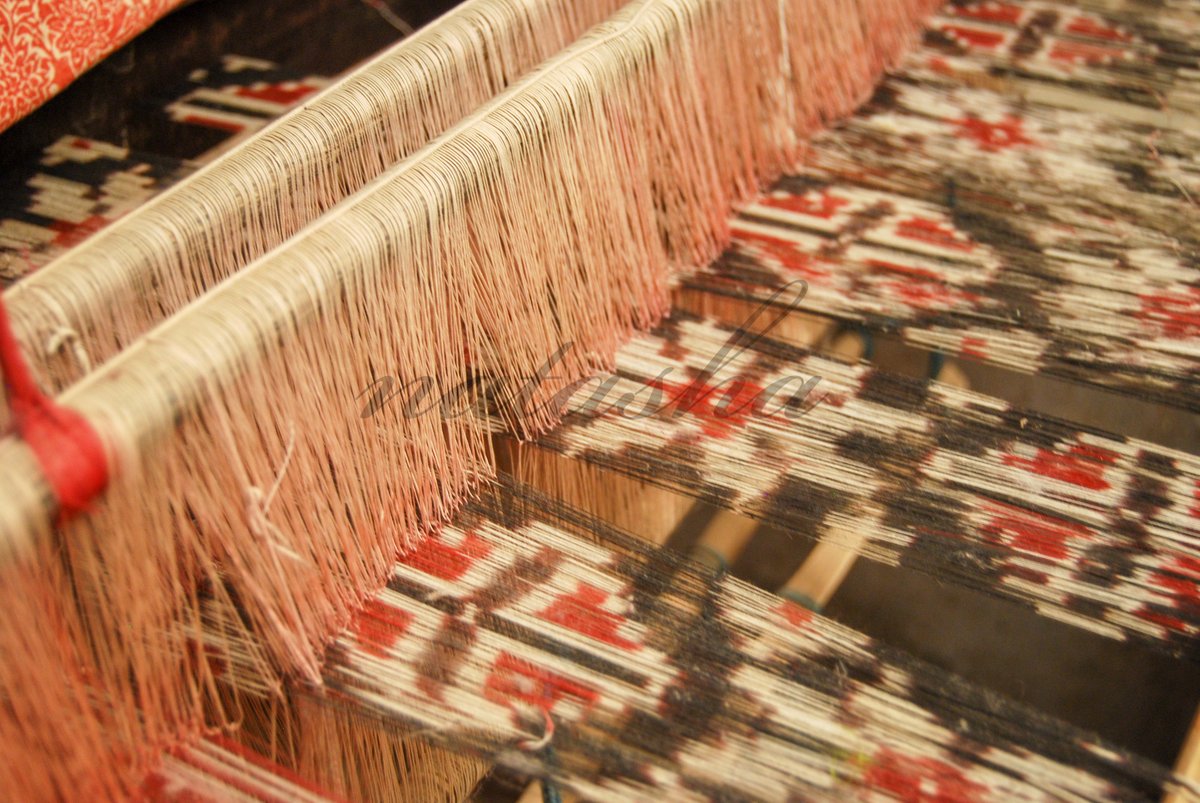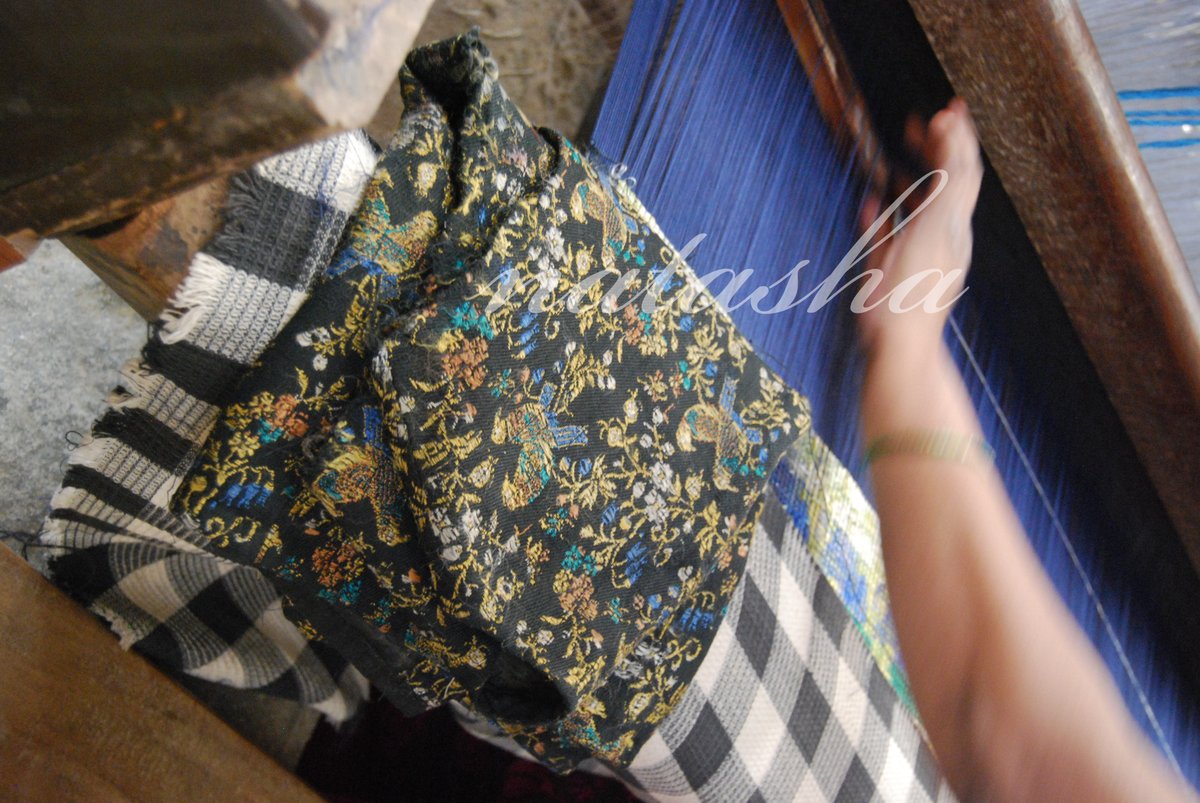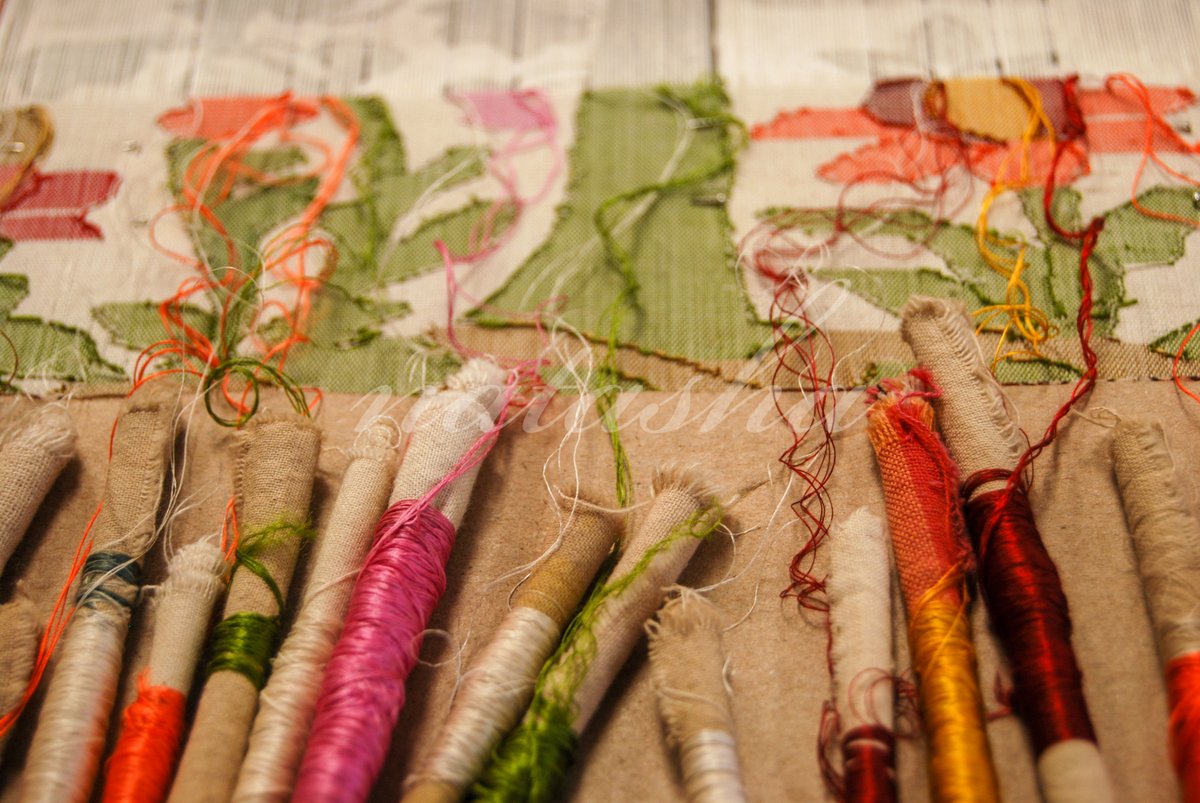The Telugu movie Mallesam was about the plight of the workers in the handloom cluster of Pochampally.
In a poignant scene, the weaver's wife speaks wistfully about someday owning an ikat saree. She spends her life helping create them, but it is completely unaffordable for her.
+
In a poignant scene, the weaver's wife speaks wistfully about someday owning an ikat saree. She spends her life helping create them, but it is completely unaffordable for her.
+
The handloom industry is second largest employment generator in rural India, and provides a primary or secondary livelihood to more than 4 million people, most of them women.
The weavers are visible, but there is an entire ecosystem of people supporting them.
+
The weavers are visible, but there is an entire ecosystem of people supporting them.
+
Most of them women.
Women help in winding the yarn on bobbins and in 'finishing'. Some also assist the main weaver, and a few are weavers themselves.
For many, spinning, dyeing, weaving and printing are secondary livelihoods. Something they do between agricultural work.
+
Women help in winding the yarn on bobbins and in 'finishing'. Some also assist the main weaver, and a few are weavers themselves.
For many, spinning, dyeing, weaving and printing are secondary livelihoods. Something they do between agricultural work.
+
In many weaving clusters, each house has a loom, which people work on whenever they have free time.
Whether this is the primary or secondary livelihood, all of them are poor. They are in debt, and they are barely compensated for the time and effort they put in.
+
Whether this is the primary or secondary livelihood, all of them are poor. They are in debt, and they are barely compensated for the time and effort they put in.
+
While there has been a "revival" of interest in handlooms, very little has trickled down to the actual producers. Except very few, they have not been able to crack the marketing side of the business, and continue to remain dependent on others.
+
+
Demonetisation wrecked havoc with the weaving industry (as it did with most other in the informal sector). With money going out of the system, most found themselves with surplus stocks which they got rid of in distress sales.
Many quit the profession permanently.
+
Many quit the profession permanently.
+
Those who could, moved to other professions.
Those who stayed back started adopting shortcuts. Parts of the process were mechanized, raising a question on the integrity of the process.
Freehand Kalamkari, for instance, was replaced with screenprinted outline coloured by hand.
+
Those who stayed back started adopting shortcuts. Parts of the process were mechanized, raising a question on the integrity of the process.
Freehand Kalamkari, for instance, was replaced with screenprinted outline coloured by hand.
+
With demand outstripping capacity, but with margins remaining low, some weavers learnt to doctor powerlooms so they looked like handloom.
With demand becoming cyclical, weavers began adapting designs and techniques from other regions, and passing it off as 'original'.
+
With demand becoming cyclical, weavers began adapting designs and techniques from other regions, and passing it off as 'original'.
+
For instance, the stole worn by the Prime Minister when he announced lockdown is a traditional weave from Manipur. However, when the public started clamouring for the weave, it was a weaver in Uttar Pradesh who fulfilled the demand; a clear ethical conflict.
+
+
Even before the lockdown pushed the handloom industry to the brink of collapse, it badly focused intervention.
The producers needed access to affordable credit and an equitable marketing system.
Guidelines were needed to minimise use of toxic chemicals.
+
The producers needed access to affordable credit and an equitable marketing system.
Guidelines were needed to minimise use of toxic chemicals.
+
The industry required self regulation to enforce the sanctity of GI tags. The industry had to universalise the use of the handmark stamp to distinguish an original handloom from a copy.
Now more than ever, focussed intervention was necessary to save the industry.
+
Now more than ever, focussed intervention was necessary to save the industry.
+
Instead of catalysing these interventions, the Government has disbanded the Handloom Board.
Though it has not achieved much in the past years, it was a forum where weavers could air their grievances.
The weavers are on their own now; at the mercy of exploitative middlemen.
+
Though it has not achieved much in the past years, it was a forum where weavers could air their grievances.
The weavers are on their own now; at the mercy of exploitative middlemen.
+
We blame the British for killing the weaving industry in India.
They did. But at least they had a reason; profits.
What reason do we now have? Except sheer apathy?
They did. But at least they had a reason; profits.
What reason do we now have? Except sheer apathy?

 Read on Twitter
Read on Twitter




